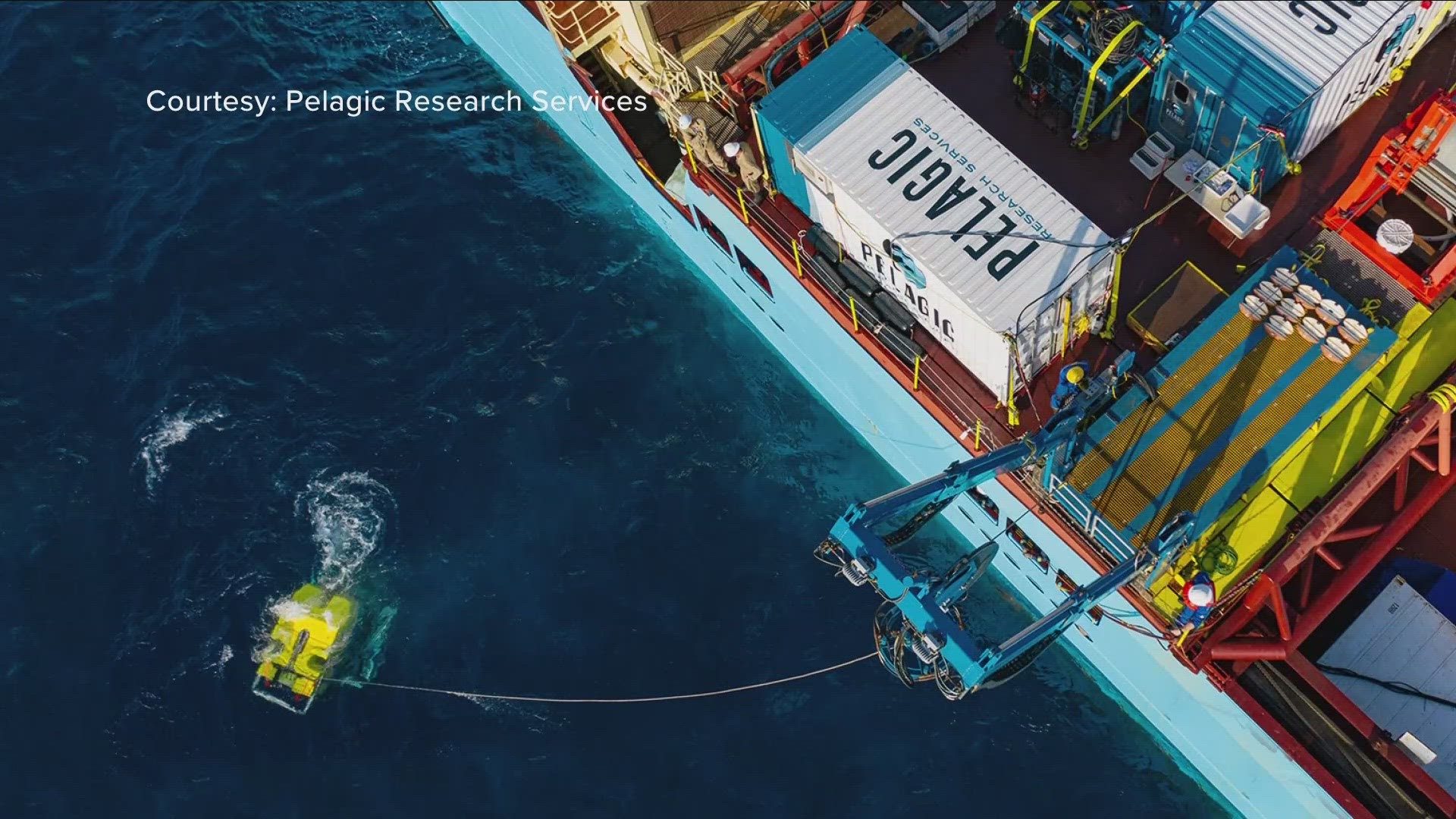EAST AURORA, N.Y. — We finally heard from officials of the Pelagic Research Services firm in East Aurora, which was central in the efforts to rescue the Titan submersible last week. They and their equipment also worked to recover the Titan debris and some presumed human remains from the sea floor after they found the submersible had imploded.
Pelagic Research Services CEO Edward Cassano told reporters on Friday, "We always knew that we'd be called at some point. And so we prepared the system for that."
That call was from the Titan's operator OceanGate and the system was the 19,000 foot deep diving remotely piloted vehicle called the Odysseus 6K. It was built in 2016 with its powerful thrusters and strong articulating arms that can grasp and help lift.
Eric Peterson, who is an engineer with MPS Technology in Florida, helped build Odysseus and watched nervously as its functioned almost flawlessly at those crushing ocean depths.
"Every time it goes in, there's like, confidence that of course it's gonna work. But always in the back of your head - if it ever wasn't going to - please don't it be right now. But it worked great."
PSR Spokesman Jeff Mahoney said, "You all read about the extreme environment. I mean there is the current and the pressures - very prevalent - and the fact that the Odysseus was able to operate 24/7 almost flawlessly. If you were in the deep ocean community - that's remarkable."
It was operated by Pelagic Research staffers in a control room aboard the Horizon Arctic search ship in the North Atlantic.
Odysseus and those controllers actually found the debris field Thursday a week ago. Cassano explains the transition from attempted rescue to grim recovery. Their first goal was to fix the location of the submersible once they found it.
"The plan was to grab the Titan and once we grabbed it with our manipulators - then we had her. Then it was gonna be attaching beacons - we were carrying extra beacons so if we lost her - other assets could track her. And then we were going to attempt to attach this heavy lift capability to the sub. At that point we would begin recovery."
He added, "We continued to document the site and by 12 o'clock - sadly a rescue turned into a recovery. Have to apologize - we're still de-mobilizing. There's a lot of emotions. People are tired."
They did all that after their rushed 23 hour deployment with gear and nine crew members as they flew from Buffalo on Air Force cargo jets to St. John's Newfoundland, Canada and the North Atlantic search site.
While the loss of the five people weighs heavy, there is also pride in knowing how hard they worked in an international search. That is even as they are normally based in East Aurora.
Cassano points out, "Our primary market is deep sea science so we've worked a lot with the University of Victoria, Ocean Networks Canada for example, NOAA, and other groups. This is our operational base. We're a mobile system so in a sense we can be anywhere."
They intend to keep it here in Western New York, even though they do have coastal operations near Cape Cod and Santa Barbara, California as well.
The Pelagic Research Services website says they normally do plenty of underwater research and even repair work on deep sea drilling platforms and may also be involved in mining minerals from the sea floor.
The Odysseus and other equipment are being sent back to East Aurora by truck to arrive on Monday.
Again, it worked well even as another similar craft in this search actually malfunctioned.
So there were lessons learned for everyone even as it was mixed with grim reality.

